1677 The rough side of cycling
A Bicycle Story
by Dave Steen
Thetis Island: Thetis Island Publishing, 2022
$12.99 / 9798409188085 A Bicycle Story is available on Amazon.ca
Reviewed by Howard Macdonald Stewart
*
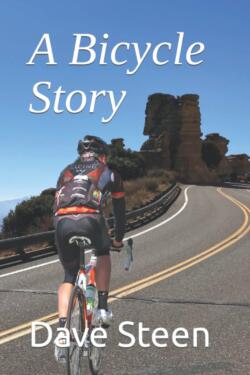 Dave Steen’s mystery novel about old crimes and old age might well have been entitled A Tale of Many Bicycles or A Tale of Many Cyclists. All the main characters — Arthur the recluse in the backwoods of Vancouver Island, Anna the “younger woman” who befriends him in her search of truth about her mother’s suspicious death long ago, the dead mother Colleen, the recluse’s Bible-addled old riding buddy Winston, their fiercely manipulative old coach Gris — are (or were) avid cyclists. I don’t mean avid as in, they ride around the park on Sundays. More like, they put in serious miles almost every day rain or shine (or used to), they seek out mountains to ride up, they wear gadgets that monitor their heart rate, and so on. They tend to own multiple bicycles. When we come upon the old coach late in the story, the bikes stowed in his suite are reckoned to be worth about $80,000. All this is to say that, while I too have been an avid if not obsessive cyclist for over fifty years, I’m not a cyclist like Dave Steen’s cyclists. I ride ratty but reliable road bikes to get around. Steen’s people ride to win (or used to). Some of them more than others. And they wear those fancy togs. Steen has constructed his intriguing mystery around their kind of cycling.
Dave Steen’s mystery novel about old crimes and old age might well have been entitled A Tale of Many Bicycles or A Tale of Many Cyclists. All the main characters — Arthur the recluse in the backwoods of Vancouver Island, Anna the “younger woman” who befriends him in her search of truth about her mother’s suspicious death long ago, the dead mother Colleen, the recluse’s Bible-addled old riding buddy Winston, their fiercely manipulative old coach Gris — are (or were) avid cyclists. I don’t mean avid as in, they ride around the park on Sundays. More like, they put in serious miles almost every day rain or shine (or used to), they seek out mountains to ride up, they wear gadgets that monitor their heart rate, and so on. They tend to own multiple bicycles. When we come upon the old coach late in the story, the bikes stowed in his suite are reckoned to be worth about $80,000. All this is to say that, while I too have been an avid if not obsessive cyclist for over fifty years, I’m not a cyclist like Dave Steen’s cyclists. I ride ratty but reliable road bikes to get around. Steen’s people ride to win (or used to). Some of them more than others. And they wear those fancy togs. Steen has constructed his intriguing mystery around their kind of cycling.
I wondered a few times as I read, rapt and engaged, how non-cyclists might find this book. You don’t have to be a bicycle racer to relate to the well-crafted story. But the book’s narrator, that aging Vancouver Island recluse, does often wax lyrical about the exquisite joy of cycling. I get this too, when I ride, and I don’t even have to suffer the pain and damage endured by bicycle racers. There is nothing quite like this low altitude, human-powered flight, and the movement required to achieve lift-off feels good, in moderation. But, can readers who aren’t cyclists relate? Does it matter?
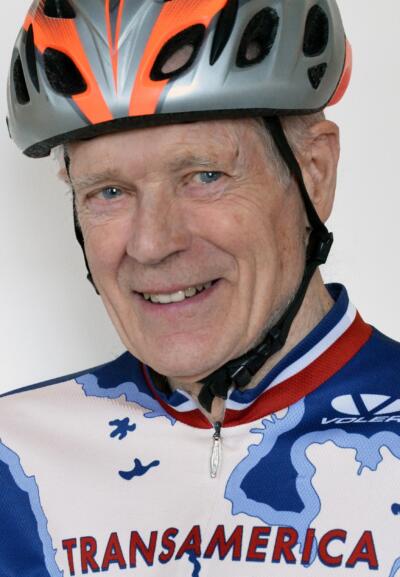
Similar questions came to mind about younger readers. Anna, whose search for truth about her cyclist mother’s demise is at the heart of the mystery, is a ripe 65 years old during most of the story. And she’s the “younger woman” love interest for the reclusive Arthur, who’s ten years older. Old coach Gris is 96 years old, for goodness sake, though still cycling up a storm. The only indelibly young person is Anna’s mother, because she died young almost sixty years earlier (while cycling, of course). But we spend much of our time delving into the pasts of the still living characters, when they were young cyclists. So, this might be a good read for those younger readers who seek insights into what old people were like, before they got old, and what happens to young people when they live to be old. In any case, Steen does a masterful job of weaving the stories of their past lives into the puzzle that is eventually solved.
We — the old — don’t all live in cat-filled shacks like Arthur, though admittedly this persuasion is well represented on our islands. And we don’t all put in miles on our bicycles the way Arthur still does, even at 75, when he’s not being distracted by Anna. And I, like many old cyclists, don’t feel kinship with these riders who insist on wearing embarrassing, tight-fitting costumes and winning races on preposterously expensive machines. Why can’t they just dress like everyone else and use their bikes for transportation? But, while I can’t relate to cycling as oneupmanship, self-abuse, and/or or exhibitionism, I can totally relate to riding as addiction or obsession, the kind that brings together the cast of A Bicycle Story.
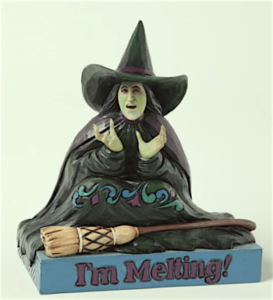
Older readers might relate to and younger readers might be enlightened by Steen’s astute glimpses of the daily challenges and traumas of getting old, of the shock of watching one’s body break down while one’s friends and family bite the dust one after the other: things that remind you of that scene in The Wizard of Oz where the Wicked Witch of the West is fast disappearing, after Dorothy throws water on her. “I’m melting. Melting!”
I suspect that many will enjoy the cycling lore that envelops the mystery. There is a lot of it, though not too much (for me, anyway). We learn much about the practice of doping bicycle racers that was entering its golden age when Arthur and Winston were young racers. Amphetamines were ubiquitous by the 1950s, but thereafter drugs and drugging strategies became ever more elaborate, killed more riders, and undermined any residual faith in the purity of the sport. In fact, we are told, the sport of bicycle racing has always had a brutal, ruthless side; with many heroes who are less than exemplary role models for our children. This rough side to cycling’s personality, and the growing role of doping after mid-century, fits well with the personality of Gris, then a much younger coach. Gris creeps towards centre stage as the novel unfolds and the mystery deepens around the demise of Anna’s mother. But it wasn’t performance-enhancing drugs that killed her.
Revealing more of the story would risk spoiling a compelling good read, one that I recommend to all readers, notwithstanding the questions raised above. I do have a minor quibble, though, about some of Steen’s dialogues. His characters sometimes say things that would work well as narrative but sound unnatural as dialogue. An issue that an editor ought to have caught, and not one that detracted measurably from my enjoyment of the story. As one of our local oldies would say, “I’m not sayin’, I’m just sayin.’”
Steen’s book carries the reader along with a first-rate story while offering a good primer about one side of the complex community of cyclists. A Bicycle Story will advance the long-neglected genre of bicycle lit and help bring it in from the wilderness to the mainstream where it belongs — but still with its own dedicated lane. As formidable coach Gris points out, bicycling could make us and our climate far healthier if more of us around the world embraced it (or returned to it). And forget about the spandex and carbon fibre and clattering shoes. Cycling is even more transcendental without these. The death at the heart of this story confirms that cycling is not without risks. But what is?
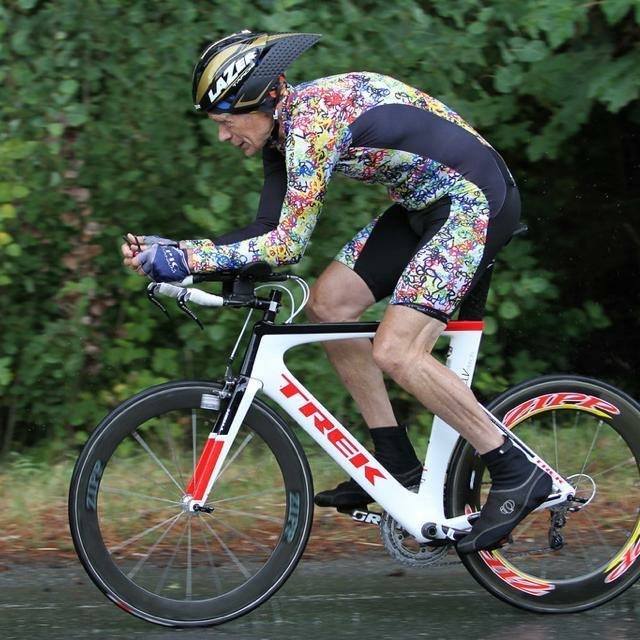
*
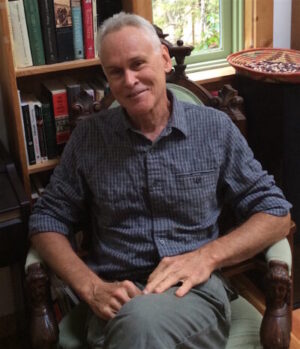
Howard Macdonald Stewart is an historical geographer and semi-retired international consultant whose work has taken him to more than seventy countries since the 1970s. His memoir of a youthful bicycle trip down the Danube with war hero and debonair cyclist Cornelius Burke, Bumbling down the Danube, was published in The British Columbia Review in 2016, and his memoir, The Year of the Bicycle: 1973, followed in 2020. He is also the author of the award-winning Views of the Salish Sea: One Hundred and Fifty Years of Change around the Strait of Georgia (Harbour, 2017), as well as a popular Remembrance Day reflection, Why the red poppies matter. He has lived on Denman Island, off and on, for more than thirty years. He is now writing an insider’s view of his four decades on the road that followed his perambulations of 1973, notionally titled Around the World on Someone Else’s Dime: Confessions of an International Worker. Editor’s note: Howard Stewart has recently reviewed books by Amanda Swinimer, Jim Kerr, John Boyko, Andrew Scott, Catherine Nolin & Grahame Russell, and Howard White for The British Columbia Review.
*
The British Columbia Review
Publisher and Editor: Richard Mackie
Formerly The Ormsby Review, The British Columbia Review is an on-line book review and journal service for BC writers and readers. The Advisory Board consists of Jean Barman, Wade Davis, Robin Fisher, Barry Gough, Hugh Johnston, Kathy Mezei, Patricia Roy, Maria Tippett, and Graeme Wynn. Provincial Government Patron (since September 2018): Creative BC. Honorary Patron: Yosef Wosk. Scholarly Patron: SFU Graduate Liberal Studies.
“Only connect.” – E.M. Forster
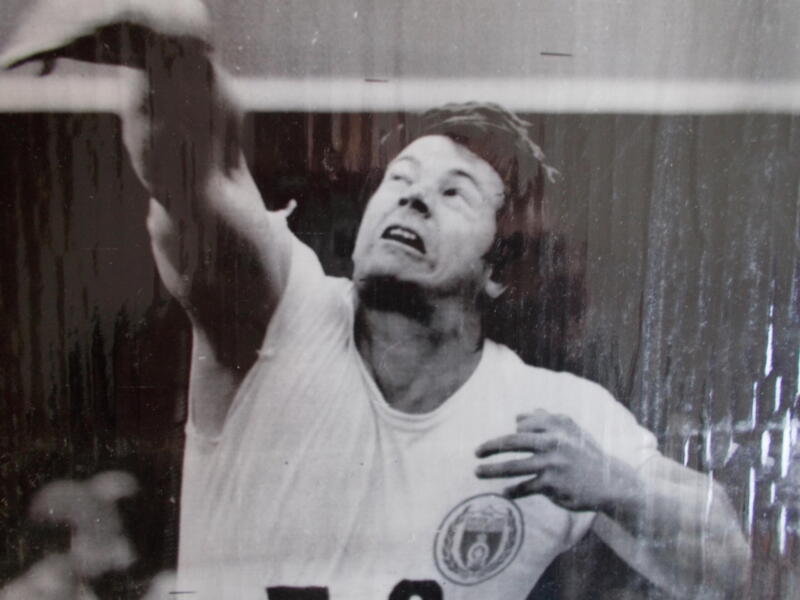
4 comments on “1677 The rough side of cycling”
Wow! This beautifully written book covers all the spectrums of human nature, suspense, and the way of the extreme athletes at that time. This novel is for everyone, not just cyclists. Dave Steen the author this wonderful book is one of Canada’s greatest athletes. So looking forward to your next book. Thank you.
Despite what appears to be an intriguing fashion division in the community of cyclists identified by Howard Stewart, his review of Dave Steen’s book is engaging, warm and seasonally appropriate; and, I imagine, triggered smiles among many readers. Thank you Howard and Dave!